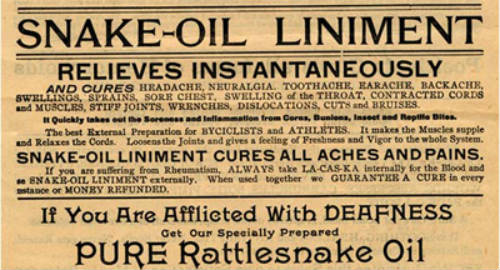So, A termite walks into a bar and asks, "Is the BarTender here?
THE FACTS ABOUT TERMITE SWARMS
Swarmers:
In the insect world, the word “swarm” has different meanings
that conjure up different images. Killer bee “swarms” that rush out of their
hive to attack are acting aggressively and defensively to protect their hive.
In contrast, a honey bee “swarm” looking for a new nest site for their queen is
very docile and not likely to sting. They also stay tightly grouped together.
Termites “swarms,” on the other hand, are neither aggressive nor tightly
grouped. A termite swarm is an event in which certain environmental conditions
trigger a great number of winged termites to simultaneously fly from their nest
(about 600-900 feet) to mate and locate new nest sites and food sources. Once matched, a “royal
couple” burrows into the ground where the queen begins to lay eggs.
Behavior and survival:
When a swarm
occurs, winged termite swarmers called alates emerge in large numbers from cracks
in buildings or holes in the soil through swarm tubes made by worker termites.
Only a small percentage survives to form new colonies. Many are eaten by
predators like birds, bats, and other insects. Or they die from natural causes
and environmental conditions before they can locate a mate and nest site.
Researchers generally agree that it takes years before a newly established
colony will produce termite swarmers. With favorable conditions, it may take 4
years before a colony produces swarmers; with less favorable conditions, it
will take longer.
Other factors that trigger a swarm:
Aside from natural swarm cycles, other environmental conditions
can trigger a termite swarm. A swarm can be triggered by a diminishing food
supply, lack of water to support a colony and, in some cases, application of
regular pesticides. Synthetic pyrethroid-type termiticides work by repelling
termites from a structure and can cut off termite movement from a structure to
required moisture sources in the soil. Under these circumstances, the
termites–whether located in the soil or within the structure–would be stressed
from either a lack of food or water and swarming may be the response to ensure
survival.
When and where swarms occur:
Swarms occur at different times of year–and day–for different
termite species. Most of the native subterranean species swarm in the spring
and to a lesser degree in the fall, usually after a rain. In San Diego, peak swarm
season for the subterranean termite occurs from February through April. Drywood
termites tend to swarm September through November. Remember that all
swarmers cause NO structural damage to buildings, they are an indicator that
there is a termite colony nearby.
Inspecting for swarms:
Inspecting for swarms:
Swarmers that appear within a home after a termiticide treatment
do not pose a threat for a new infestation. Homeowners may contact their Pest
Management professional (PMP) to control the swarmers so they’re not a
nuisance, but in most cases, vacuuming the dead swarmers is all that’s needed.
If a swarm occurs before a termiticide treatment, a PMP should perform a
thorough inspection of the structure to recommend the best method of control.
Assessing infestation:
The presence of many swarmers (hundreds) in an untreated
structure indicates a termite infestation. In
some cases, though, the presence of a few swarmers, or only their wings around windows
and doors, etc., may not necessarily mean that the structure is infested. It
may simply indicate the presence of an outdoor colony near the structure;
swarmers are attracted to a structure’s lights. What’s more, even heavy swarms
outside and near a building may not indicate an infestation at all. But in all
of these cases, it’s prudent to have a PMP thoroughly inspect the structure.
Termidor and swarms:
Termidor termiticide is a non-repellent chemical. Termites can’t
smell it, see it, or feel it. Since they don’t know it’s there, they forage
freely in a treated area. Its toxic effect to termites is slow compared to many
other termiticides, so no immediate threat is realized by the colony and swarming
is not triggered by a Termidor treatment.
Termidor control:
Termidor kills termites through ingestion, contact, and through
“The Transfer Effect™.” The active ingredient in Termidor–fipronil–is slow
acting and allows the termite to continue its normal routine. But the termite
remains active long enough to transfer the termiticide to a large number of
other termites in the colony before dying itself. This combination of
ingestion, contact, and “Transfer Effect” (which is unique, puts Termidor in a
category by itself) routinely provides 100% termite control in 3
months or less (Subterranean Termite Control)
Swarms after treatment:
Occasionally, homeowners report swarms after a Termidor
treatment. These are probably coincidental and have less to do with the
treatment and more to do with the time of year, environmental conditions, and
the termite colony’s size and health. The colony may have been in a “biological
mode” to swarm at that time, which happened simultaneously with the Termidor application.
Swarms occurring soon after a termiticide treatment may or may not be linked to
the treatment, but in either case the swarm would not indicate a failed
treatment. Importantly, a responsible termite control program demands periodic
inspections by a licensed PMP.
For more info on handling your termite situation, contact Antac Pest Control at 877-AntacMan, or visit our website at www.antacpest.com.
For more info on handling your termite situation, contact Antac Pest Control at 877-AntacMan, or visit our website at www.antacpest.com.





